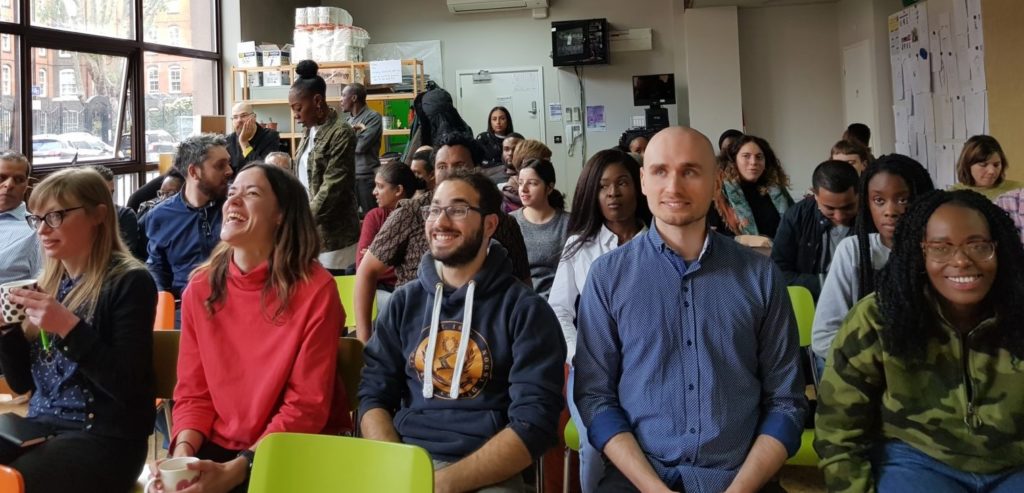#6 Week Notes – week beginning 18th November
Community wealth building at the neighbourhood level
This week I attended a Local Trust conference at Toynbee Hall where I saw Ted Howard of Democracy Collaborative talk about his work, with Fran Jones of CLES responding.
I’ve written before about community wealth building and our interests in it, and I was most struck at this event by some of Fran’s comments about the tensions between community wealth building and neighbourhood or community-led work at the moment. They don’t have to be in tension, but so much work in neighbourhoods, things like the Big Local programme, have seen communities try to replace or mitigate the losses that they have suffered during nearly ten years of austerity. They often don’t have the capacity to think about longer-term wealth building when they’re trying to save or replace well-used services.
It was a further reminder of just how much of a scourge austerity has been to individuals, communities, places and our society as a whole. I don’t typically like glib lines about complex social issues, but Alexei Sayle’s definition of austerity has always driven a hollow laugh:
“Austerity is the idea that the 2008 financial crash was caused by Wolverhampton having too many libraries.”
New ideas
It was our away day last week, and I loved it. I’ve been really emphasising with the team that I would much rather they took risks and asked for forgiveness than waited for permission. This week in our Lambeth office I talked with a couple of colleagues about how we could also apply that to what we do with the communities we work with. I’m keen for new ideas and was excited by what I heard. As I tweeted at the time, I also got into a discussion about a boxing club…

Scaling impact and scaling ways of working
I was very pleased to be invited to see Local Welcome talk about their model for lunch clubs with refugees, and how they are looking to grow what they are doing in the coming year. They’re an impressive bunch, doing a seemingly small, but actually quite big thing.
I love anything that involves good use of social contact theory. I first really engaged with that theory by reading Together by Richard Sennett, and have probably most experienced it in our work with the Cares Family. To steal from Wikipedia, it’s the idea that ‘intergroup contact under appropriate conditions can effectively reduce prejudice between majority and minority group members’. Or, if you get people to spend time together doing things, and you get some other things right, then you can change how they think about each other.
But as well as liking their use of social contact theory, I am really impressed by how they are rigorously looking to build their work and genuinely scale it. Do check them out.
Reading, listening and watching
I have been listening to a lot of news from the impeachment investigation in the US and was full of awe for Dr Fiona Hill in particular (take a look at this YouTube clip). There has been something pleasing about the seeming celebration of those with quiet and calm integrity, a desire to do their job well, and all of them demonstrating a career of service. I wonder what process in the UK could bring about a public demonstration of those values?
I go for a long run every Sunday. I don’t always listen to music, but sometimes it’s great for getting your cadence up. Frightened Rabbit saw me around 11 miles this weekend. If you’re not a runner, then you might not know the importance of cadence. But think about it this way: you can’t change speed when your feet are in the air, and so the more often you touch the ground, the faster you can go.

